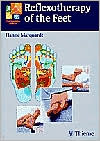Levin and O'Neal's The Diabetic Foot with CD-ROM
Search in google:
Fully updated, now in full color, this latest edition of Levin and O'Neal's The Diabetic Foot continues the work's proud tradition of providing the best diagnostic and management information for the challenging problems faced by patients with diabetic foot problems. With tips and pearls in every chapter, expansive color photographs, and its focus on team care, this classic reference is a must-have for anyone who cares for diabetic patients!Provide balanced, coordinated "team" care with multidisciplinary perspectives from diverse health professionals who care for diabetic patients with foot problems, including orthopedists, endocrinologists, vascular surgeons, podiatrists and wound care nurses.Use the exclusive Tips and Pearls in every chapter for quick review. Enjoy fresh takes on many topics with 50% new contributors.Find information more easily with a new full-color page design.Meet diagnostic challenges with color photographs of the clinical problems discussed in the book. Doody Review Services Reviewer:Edward Abraham, MD(University of Illinois at Chicago College of Medicine)Description:This is the seventh edition of a book that addresses all aspects of the management of diabetic patients with lower extremity complications.Purpose:The purpose is to continue to update and improve the art and science of the pathophysiology, prevention, and care of the diabetic foot.Audience:The main audiences are active general orthopedists, foot and ankle specialists, podiatrists, primary care physicians, peripheral vascular surgeons, physiatrists, and trial lawyers. The editors, John H. Bowker, MD, from the University of Miami, and Michael A. Pfeifer, MD, from Johnson & Johnson, are supported by 56 contributors.Features:This reorganized edition has six sections and two appendixes. The book opens with several topics such as the biomechanics of the diabetic foot, skin manifestations, epidemiology and economic impact, foot ulcers, and amputations. Evaluation techniques such as classification, imaging, and noninvasive vascular testing are discussed in separate chapters. The important area of nonsurgical care is also covered separately. Wound healing modalities are discussed in detail. The surgical management discussion ranges from ulcer debridement to amputations. The authors recognize the importance of a team approach to the patient with a diabetic foot by presenting several chapters on the topic. A diagnostic and procedural coding chapter helps medical professionals with reimbursement issue and a chapter on medical-legal aspects of diabetic foot problems has been expanded. The information is well supported with color photos and illustrations and the references at the end of each chapter are extensive and relevant. Assessment:This is the most authoritative book on the diabetic foot in print. It covers all aspects of managing the diabetic foot. Since the first edition some 34 years ago, the authors have remained true to their purpose of helping diabetic patients prevent foot problems and minimizing the morbidity associated with progressive foot ulcers and Charcot foot. I very highly recommend this book to all medical practitioners caring for patients with diabetic foot disorders.
Section A: The Foundations of Diabetic Foot Management1: Diabetes Mellitus: Old Assumptions and New Realities2: Epidemiology of Foot Ulcers and Amputations in the Diabetic Foot3: Neuropathic Problems of the Lower Extremities in Diabetic Patients4: Atherosclerosis and Thrombosis in Diabetes Mellitus: New Aspects of Pathogenesis5: Hemorheology: Principles and Concepts6: The Biomechanics of the Foot in Diabetes Mellitus7: Cutaneous Aspects of Diabetes Mellitus8: Nutritional Issues in the Patient with Diabetes and Foot Ulcers9: Pathogenesis and General Management of Foot Lesions in the Diabetic Patient10: Diabetic Foot Problems and their Management Around the WorldSection B: Evaluation Techniques and Nonsurgical Management11: An Improved Method for Staging and Classification of Foot Lesions in the Diabetic Patient12: Diabetic Foot Ulcer Care: Assessment and Management13: Total-Contact Casting in the Treatment of Neuropathic Ulcers14: Alternative Weight Redistribution Methods in the Treatment of Neuropathic Ulcers15: Imaging of the Diabetic Foot16: Noninvasive Vascular Testing: Basis, Application, and Role in Evaluating Diabetic Peripheral Arterial Disease17: Radiologic Intervention in Diabetic Peripheral Vascular Disease18: Modulating Wound Healing in Diabetes19: Adjunctive Hyperbaric Oxygen Therapy in the Treatment of the Diabetic Foot Wound20: Footwear for Injury Prevention: Correlation with Risk Category21: Charcot Neuropathy of the Foot22: Infectious Problems of the Foot in Diabetic PatientsSection C: Surgical Aspects23: Surgical Pathology of the Foot and Clinicopathologic Correlations24: Medical Management of the Diabetic Patients During the Perioperative Period25: The Role of Vascular Surgery in the Diabetic Patient26: Plastic Surgical Reconstruction of the Diabetic Foot27: Charcot Neuropathy of the Foot: Surgical Aspects28: Minor and Major Lower Limb Amputation in Person with Diabetes Mellitus29: Rehabilitation of the Diabetic AmputeeSection D: Team Approach30: Organizing an Education-Based Diabetic Foot Clinic31: Lower Limb Self-Management Education32: Role of the Wound Care Nurse33: Role of the Podiatrist34: Pedorthoic Care of the Diabetic Foot35: Psychosocial and Psychological Aspects of Diabetic Foot Complications36: Empowerment in Amputation Prevention37: Improvements in Diabetic Foot Care with Clinical Information SystemsSection E: Medicolegal Aspects38: Medicolegal Aspects of Care and Treatment of the Diabetic Foot








